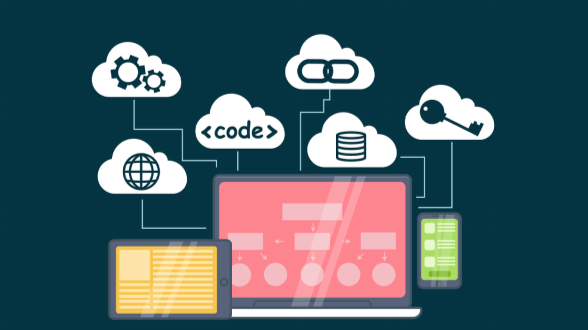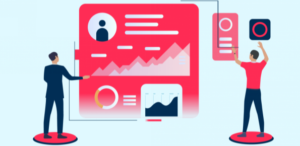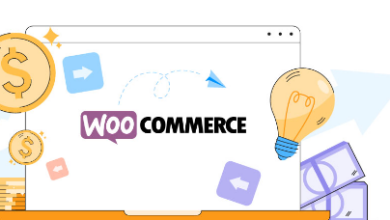How SaaS Is Changing the Web Design Industry?

It’s no secret the internet is always changing- what was popular a few years ago may now be completely outdated. This is especially true in the world of web design, where new trends in software-as-a-service (SaaS) are dictating how many web-based industries will evolve. For those who may not be familiar, SaaS is a software delivery model that allows users to access and use applications over the internet. It’s typically subscription-based, which means users can sign up for a monthly or yearly plan to use the software.
There are many benefits of SaaS for web design professionals, such as lower costs and try. Design agencies and freelancers are quickly adopting SaaS products because of how they simplify the design process. In the past, designers would have to purchase and download expensive software programs that were difficult to learn and use. With SaaS, all you need is an internet connection and you can access powerful design tools from anywhere in the world.
The popularity of SaaS is only going to continue to grow in the world of web design, so professionals need to keep up with the latest trends. And since these tools are often cloud-based, designers can access them from anywhere in the world with an internet connection – making working remotely easier than ever before.
Quality Design has Become More Accessible
SaaS web builders are making good design more accessible to small and medium businesses that may not be able to afford their teams.
The appeal of many web builder services like PageCloud is that anyone can use them, regardless of their skill level. Even if you know next to nothing about web development, programming, color theory, or basic design principles, you can still create an effective website. All the parts are there and designed to be slotted together into sites that work.
Because these services also handle coding, they can smooth out some of the most difficult challenges that smaller businesses face when designing a website. A web builder service can easily generate a site that is made for mobile, has responsive page design, or is set up with a basic e-commerce framework for your business – all features that would otherwise require expensive outside help or hours of trial and error to get right. This makes it possible for businesses of all sizes to create professional-looking websites without breaking the bank.
More Possibilities
One of the biggest benefits of these platforms is that they drastically reduce the amount of time needed to create a prototype. In the traditional workflow, designers would need to create their designs in another program before converting them into HTML and CSS. With a SaaS platform, the design can be created directly in the platform, which saves a significant amount of time.
Additionally, these platforms often include features that streamline common web design tasks. For example, many platforms now include automatic CSS generation, which can save designers hours of tedious work. As a result, experienced web designers can use these platforms to create prototypes quickly and efficiently.
Easy Implementation of Complex Functions
One big advantage is that SaaS web design tools make it easy to implement advanced web design features, without having to code everything from scratch. This makes web design more accessible to people who don’t have coding experience, and also allows for more innovative websites. Another advantage of SaaS web design tools is that they let designers experiment with creating elements that typically require robust back-end programming — like e-commerce and content management systems — even if they don’t have a web developer partner or significant coding experience. In addition, some of these tools automatically manage the implementation of advanced features, freeing up web designers to focus more on design than on code.
Widgets, Add-Ons, and Plugins
As web design for SaaS becomes more streamlined, developers are seeing similar benefits. They don’t need to stick around for foundation-laying work and can experiment with innovative new development techniques. This results in websites with an array of new features. Web developers have also been freed up to design custom widgets and add-ons for businesses that need advanced functionality. This includes things like a pop-up customer service chat window, an animated header, or a widget that creates a burst of emojis when a user adds an item to their cart.
SaaS web builder platforms have made it easier than ever for businesses to create advanced websites without the need for a full-time web developer on staff. While SaaS is streamlining the UX design firms
process, it’s not putting developers out of work. Instead, they are seeing opportunities to be more creative and innovative in their designs.
Easy Software Support
In web design, making sure that all software is up to date is crucial to avoid any major issues. Outdated software can severely slow down a website or even introduce new security vulnerabilities. This is a key factor to consider in any SaaS business, as it can lead to loss of customers. We advise you to perform a website security audit for your product website regularly.
Updating web software also has the chance of remaining compatible with other web systems and APIs. When using current platforms, there is also likely to be direct access to a support team and platform community that can help resolve any potential issues. Consequently, running an updated website not only prevents web design problems but also provides peace of mind and protection for patrons.
Enabling Analytics-Informed Design
Without data, it can be difficult to understand how users are interacting with the site and what changes need to be made to improve the user experience. However, collecting and analyzing data can be a time-consuming and daunting task, especially for businesses that lack experience in this area. This is where SaaS web design platforms can be extremely helpful. By default, these platforms collect massive amounts of data that can be used to inform the design of things like templates. In addition, many of these platforms also have native analytics platforms that companies can use to optimize their web design. As a result, businesses without experience analyzing visitor and web page data can still take advantage of insights derived from analytics. This allows them to make informed decisions about web design and ultimately create a better experience for their users.

Overall, SaaS web design platforms have many advantages that make them a great choice for businesses of all sizes. They streamline the design process, making it easier and faster to create a website. In addition, they provide access to data and analytics that can be used to inform the design process. And finally, they offer easy software support.








